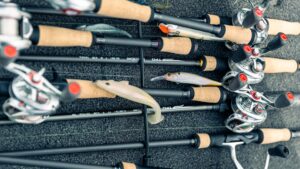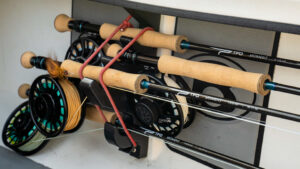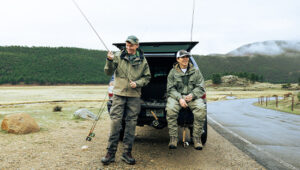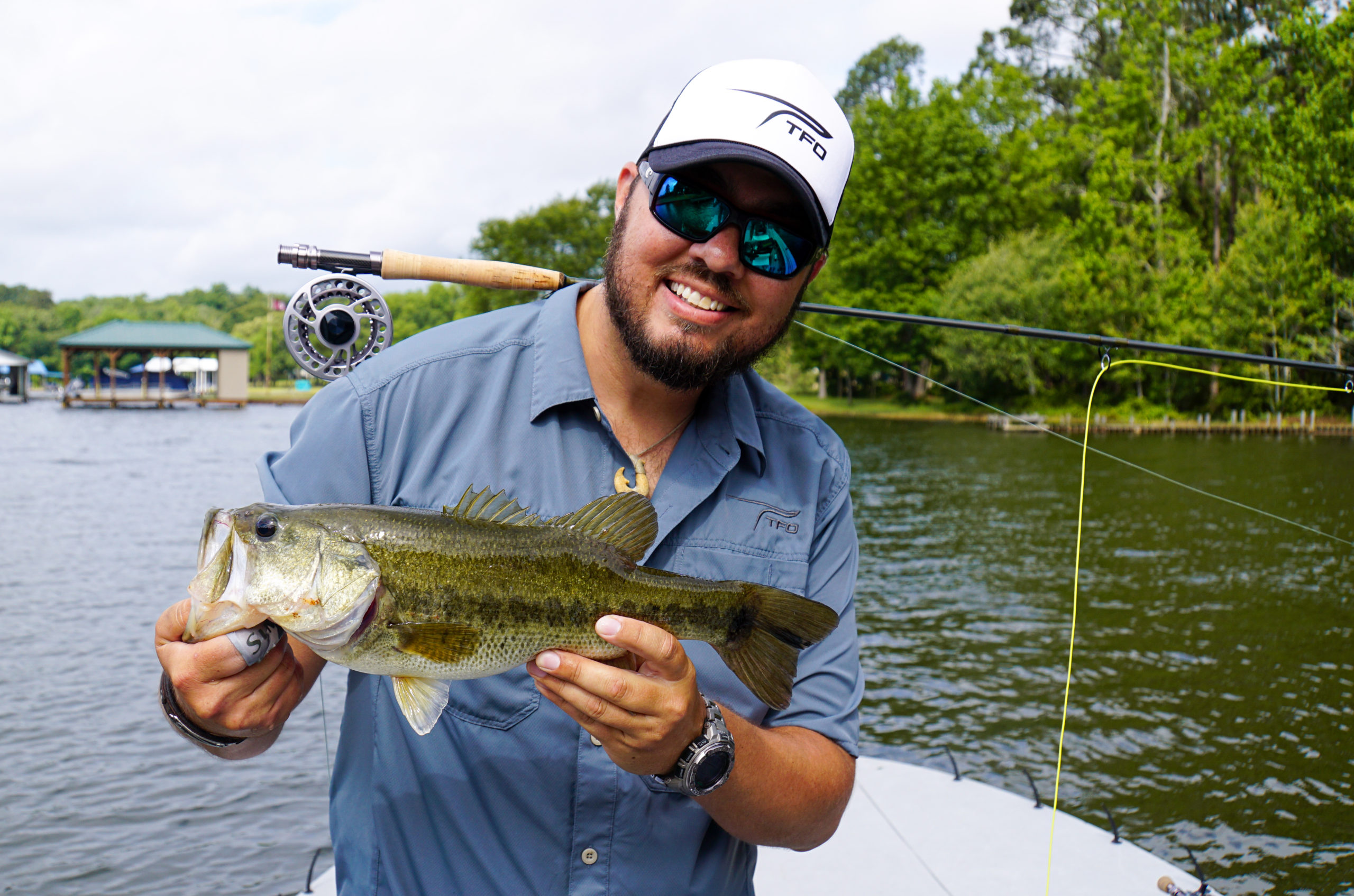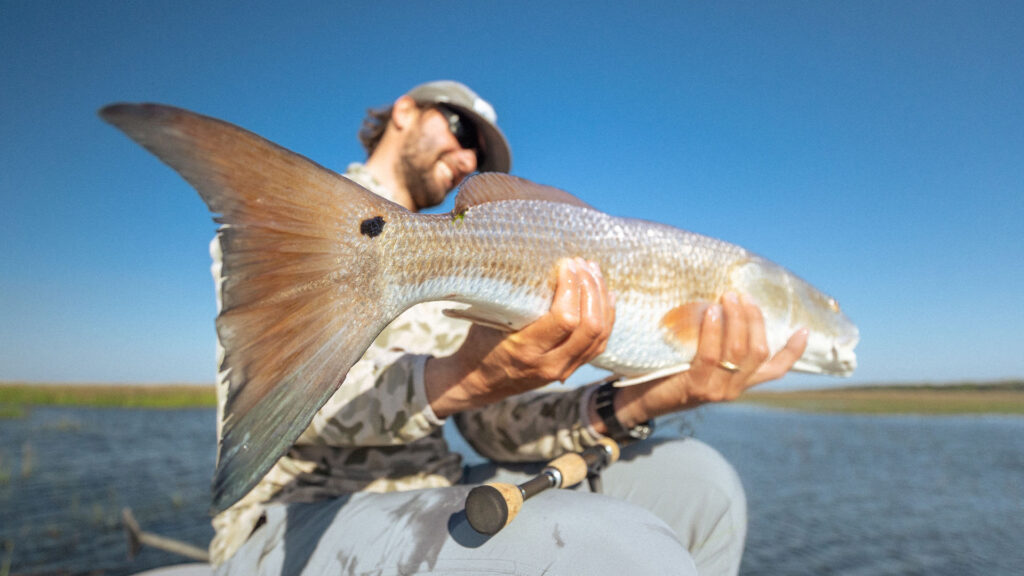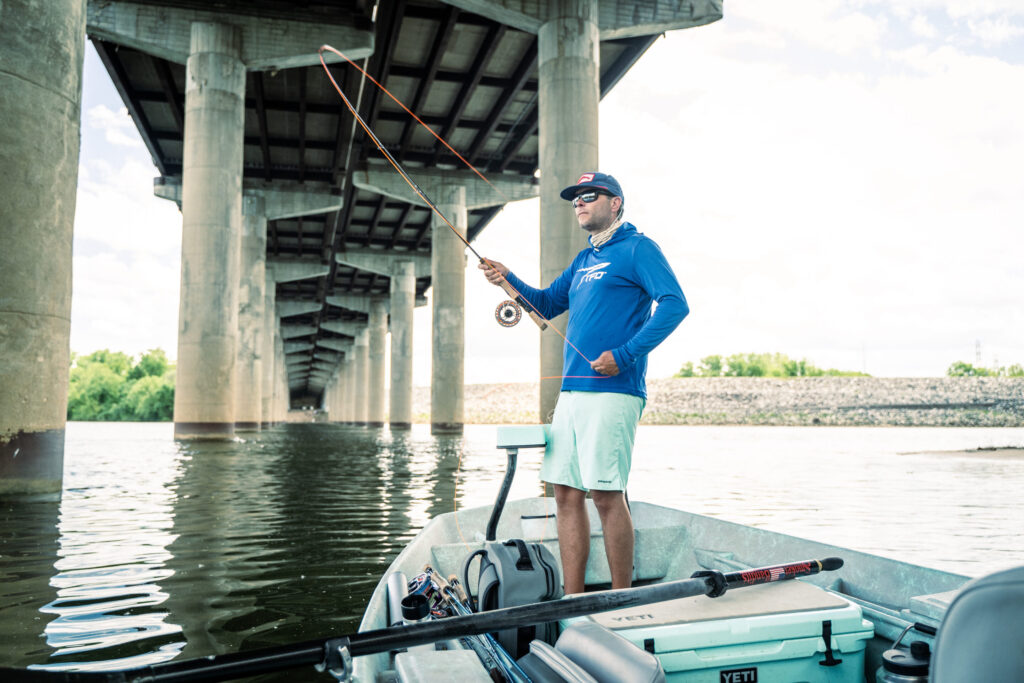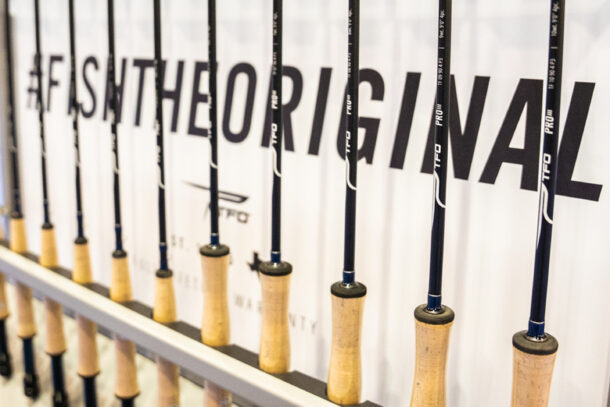It’s mid summer, and if there’s anything that gets anglers like Grant Braudrick more fired up than anything, its topwater bass bites.
In central Texas, and a lot of places this time of year, it’s not uncommon for temperatures to be in the upper 90s (or higher), with little to no chances of rain for a few days – which makes for tough fishing conditions on lakes, and even rivers and creeks. Knowing the right times to go, what to look for, and what tools to take with you are critical for finding success.
TFO rep Grant Braudrick and Texas native spends a significant amount of time catching large bass on the lakes of central Texas during the spring and summer. We thought we’d check in with him and get some tips on summertime bass on the fly tactics.
Talk about how you plan a trip to fish for bass on the lakes in your area. How do you plan where you going and when to go?
Lakes can be very challenging in the summer. We normally have a morning bite that starts around sunrise or around 6am. By around 9 or 10am at the latest, the bite will die off. During the middle of the day, fish tend to head to the middle of the lake where temps are more stable. I’ll usually focus on deeper water and throw more subsurface baitfish, where as in the morning and evenings, I’m throwing top water this time of year. The evening bite usually starts around an hour and half before sunset and lasts until dark.
What type of boat do you use for bass fishing on lakes.
When I’m on the lakes I’ve got my 17’ Mitzi poling skiff boat. Some people harp on me for using a saltwater flats skiff on fresh water lakes in North Texas, but I’m able to take it on bigger water on the coast if need be, but more importantly, it allows me to get extremely shallow to get where bass boats can’t get to.
Stealth is very important and this skiff helps me get to places quietly. I use spikes on the front of my boat to keep my fly line in one area. There can be a lot of grass and vegetation in some of the areas I’m trolling back into so those spikes really help with keeping the fly line from getting tangled up incase I hook into a fish and that way my fly line and reel stays clear, also having fly lines get caught in vegetation can cause enough disturbances to spook a fish as well.

When people think of bass on the fly, they think 8 weight, but I see a lot of rods on the deck of your boat on your Instagram posts. Looks like you use a few different weight sizes. Can you go over those set ups?
Sure thing. Basically how I structure my set ups is depending on the water that I’m fishing. The smaller the water, the lighter the rod (action) I’ll be going for. The bigger the water, the more elements (wind) you’ll be dealing with likely, so I’ll want something faster.
Not all lakes are the same, so I have a system that works for me according to which lakes I’m on.
For lakes with lots of grass, lillypads, and dingier water – likely lots of subsurface structure and stuff that fish can get caught up on – I actually like to use a 9wt. I get weird feedback sometime about that , but if I’m fighting a 6-8 lb bass with all that subsurface stuff to get caught on, I’d much rather have the extra muscle and leverage with a 9wt to be able to fight that fish out of structure and get it into open water so I can play it out and get it to the boat. Casting larger flies with heavier line all day can wear your arm out, and that 9 weight can be your best friend in the scenario.
For clearer water lakes with more rocky terrain/bottoms, I usually go with an 8wt.
For both scenarios, I absolutely love and cannot say enough good things about the Axiom ll-X. We get a lot of heavy winds in Texas, and especially when fishing on open lakes and that rod absolutely delivers. Recently, I’ve been enjoying using the LK Legacy 8wt. That rod is a cannon as well. Very similar to the classic BVK, but feels a little stronger in the tip section when fighting big fish. I’ve also really enjoyed the upcoming Blue Ribbon series. A little bit more of a medium action. When the bass aren’t as active I’ll throw popper on a 3wt for sunfish and have a blast. Who doesn’t love sunfish on a 3wt? Other TFO favorites of mine are classics like the Mangrove and the Clouser. For reel, I just match the rod with the appropriate BVK-SD reel.


With all those set ups I’m sure you have an assortment of fly lines that accompany each one. Can you go over those?
I have several different types of fly lines for each type of water column or depth I’m going to fish for.
For topwater – a floating line matched to the rod (8 weight rod with a 8WF line). Here recently I’ve been using Monic lines and really enjoyed them. For topwater I use Monic Icicle and 101 floating lines and their Henley clear lines.
For subsurface, I use a variety of intermediate line, heavier intermediate, and a full sink if the situation calls for it. Same deal, been using Monic lines. I tried to have something that covers all water types and columns/depths. You need to be able to deeper if you need to.
When it comes to both topwater and subsurface, you want something that has a shooting head to it, and not a flat line so you can get the fly where you want it to be – which is right next to the structure or bank. As close as possible. You only want to get 2-3 casts, and these lines aren’t meant to fault cast 5+ times and you’ll likely miss an opportunity to a fish or spook it if you are casting more than that.

For someone just starting out and that might not have the budget to buy 3-4 rods with different lines for each, what would you suggest?
For someone who is just starting out, I would start with an 8wt and get an extra spool for the reel so you can have two lines. Have one spool with a floating line, then the spare spool with some sort of an intermediate sinking line. Intermediate will allow you to get to most all depths when you need to do subsurface stuff.
What about leaders? Do you have a preference on material for both topwater and subsurface?
For topwater, I make my own with monofilament, but I usually up the strength a bit.
For warmwater bass fishing on more clearer, rockier lakes, I build a leader starting with 30lb flourocarbon butt section, add on a length of 20lb, then a length of 10lb to the fly.
For dingier water with lots of grass, pads, etc. – I’ll do 30lb fluorocarbon butt section to a section of 20lb fluoro to the fly.

Knots?
Palamar Knot for topwater. Super quick strong knot. Lefty’s Loop Knot for subsurface stuff.
Pro Tip – The knot is your most important thing. When you tie a good knot, don’t do a stress test when you first tie it. You’ll likely break off due to abrasion. Also – constantly check your knots! Got stuck on a tree, just caught a fish, hit the side of your boat – check your knot. There’s NOTHING worse then hooking into a fish then loosing it due to a failed knot or a nick in the line.
I broke off an 8lb bass during a tournament last month that would have hands down been the biggest length and weight fish of the day. Hooked into the fish, saw it, and it took a big run. Line took tension and snapped because of my knot. Talk about nightmare fuel when you lose a fish like that and you know it’s your own fault.

What about flies/poppers?
For topwater, I like Rainy’s Rattlin Frog. It’s a weedless frog that has a rattle in it. Comes in different colors. Has a great pop with a deep head. Another great one is Rainy’s Air Jet. Both are excellent frog patterns.When it comes to subsurface baitfish and crayfish patterns, you need to observe your body of water and look at the forage, but for me a few of my favorites are Rainy’s Warpath, Gamechangers, Ghetto Craw (crayfish), and Murdoch Minnows.
Clouser Minnows and Lefty’s Deceiver are also two very reliable patterns that can pretty much work anywhere. White and chartreuse is a classic go-to for color for these patterns.
What’s crazy is that lakes are different everywhere. The lake that’s right next to my house is completely different from the lake that’s an hour away. Even though we are in the same region, it’s completely different, and every body of water is a little bit different from each. Its all understanding what the fish are keyed in on. It also can depend on the day (weather).
If it’s a cloudy day, I’ll probably throw something a bit darker, which seem counter-intuitive but it really brings out that shadow a little better. If it’s a clearer day, I’m going to throw something a little bit more realistic to what they’re actually feeding on in color and in size. Size is super important and often overlooked when it comes to pattern selection.
At the end of the day, let the lake speak to you as to what you need to be doing.
I see where you’ve done some fishing with Steve Dally on the White River for some big browns. Have you learned anything from Steve that can cross over to bass fishing – specifically strip/retrieval patterns?
Absolutely. A lot of anglers have this tendency to just retrieve fast. Bigger fish will get triggered by erratic behavior from prey. When a school of fish is just swimming along, a bass or big predatory fish will just let that fish(s) just swim a long. The second that one of those fish acts strange – twitching off in a pattern that’s not normal – that triggers that big fish into a predatory mode.
A lot of times in my mind, I’ll count a “One. One Two. One Two Three. Pause…” rhythm/retrieval pattern and then see how the fish reacts. I’ll switch up my counts, retrieval pattern to figure out what the fish are keyed on for that particular day and use that for the rest of the day.

Any other tips or words of wisdom for anglers out there?
The biggest thing you can do is visit your local fly shop. These guys have a vast collection of knowledge of the waterways around you. Go in there, buy a few things, and ask them some questions. If you support them, they’ll support you.
Another tip is take advantage of social media and even Youtube. I was a on a work trip in Wisconsin a while back and had two hours to fish for musky. I caught 3 musky in the span of two hours just because I did a little research ahead of time.
Also when you get to a new area, don’t just wade in and start casting away. Sit back and observe the area, look for signs of fish, forage, etc. If you hear a bunch of pops in the lilly pads, maybe it’s a good idea to throw on a frog and see what that is. Conversely, if you see a bunch of fish schooling out in the open water, its probably a good idea to throw on a bait fish pattern. Let the conditions guide you into what you need to be doing.

Grant Braudrick is a TFO rep for the Texas, Oklahoma, and Arkansas area. He’s lived in Texas his whole life and been fishing since he was 10. He is also a rep for Rainy’s flies (hence the fly suggestions). When Grant isn’t fishing, you can find him playing music around Texas. Find out more about Grant through his social media links below.
https://www.instagram.com/goodoleg – fishing
https://www.instagram.com/goodolegmusic – music
![]()
